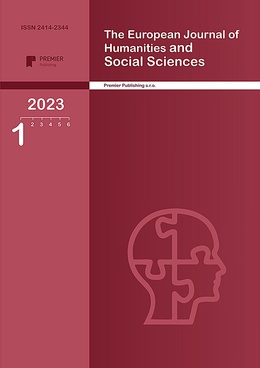APPLICATION OF G. POLYA’S PROBLEM-SOLVING PROCESS IN TEACHING HIGH-SCHOOL PHYSICS
Authors
Le Chi Nguyen, Hoang Trung Thuan, Ta Thi Huong Giang

Share
Annotation
The study investigates the application of G. Polya’s four-step problem-solving process in teaching Physics. This teaching method helps students form and develop problem-solving skills in learning, including 1) Understanding the problem; 2) Making a plan; 3) Executing the plan; 4) Looking back and reflecting. An experimental teaching session on “some forces in practice” for 300 tenth graders in two high schools (grade 10) was conducted as part of this study. Experimental results at first show that more than 80% of students have significantly improved their problem-solving skills. These experimental results are expected to enable teachers and students to teach and learn Physics effectively, meeting the expected outcomes of the General Education Program.
Keywords
Authors
Le Chi Nguyen, Hoang Trung Thuan, Ta Thi Huong Giang

Share
References:
- Ahmed, A., Melesse, S., & Wondimuneh, T. (2020). Students’ perception of the application of cooperative problemsolving method and its effect on mathematics performance: The case of secondary schools in Awi-zone, Ethiopia. Research in Pedagogy, 10(1), 1–12. https://doi.org/10.5937/istrped2001001a
- Barrows, H. (1986). A taxonomy of Problem-Solving methods. Medical Education, 20, 481–6. New York: Springer.
- Demitra, & Sarjoko. (2018). Effects of handep cooperative learning based on indigenous knowledge on mathematical problem solving skill. International Journal of Instruction, 11(2), 103–114. https://doi.org/10.12973/iji.2018.1128a
- OECD, (2014), PISA 2012 Result: Creative problem solving: Students' practical problem solving skills (Volume V), https://www.oecd-ilibrary.org/education/pisa-2012-results-skills-for-life-volume-v_9789264208070-en.
- Germain-Williams, T. L. (2017). Teaching children to love problem-solving: a reference from birth through adulthood. World Scientific Publishing Co. Pte. Ltd. https://doi.org/10.1142/10415
- Hobri, Ummah, I. K., Yuliati, N., & Dafik. (2020). The effect of jumping task based on creative problem solving on students problem solving ability. International Journal of Instruction, 13(1), 387–406. https://doi.org/10.29333/iji.2020.13126a Hulaikah, M., Degeng, I. N. S., Sulton, & Murwani, F. D. (2020). The effect of experiential learning and adversity quotient on problem solving ability. International Journal of Instruction, 13(1), 869–884. https://doi.org/10.29333/iji.2020.13156a
- Irwanto, Saputro, A. D., Rohaeti, E., & Prodjosantoso, A. K. (2018). Promoting critical thinking and problem solving skills of preservice elementary teachers through process-oriented guided-inquiry learning (POGIL). International Journal of Instruction, 11(4), 777–794. https://doi.org/10.12973/iji.2018.11449a
- Okafor, T. U. (2019). Effect of polya’s problem solving technique on the academic achievement of senior secondary school student in physics. European Journal of Physics Education, 10(1), 38-48.
- Riyadi (2021), Profile of Students’ Problem-Solving Skills Viewed from Polya's Four- Steps Approach and Elementary School Students, European Journal of Educational Research (Volume 10, Issue 4, p 1625 – 1638)
- Tan, O.S. (2003), Problem-Based Learning Innovation: Using Problems to Power Learning in the 21st Century, Singapore Temasek Centre for Problem-based Learning.
- Sari, N. M., Pasundan, U., & Yaniawati, P. (2019). The effect of different ways in presenting teaching materials on students mathematical problem solving abilities. International Journal of Instruction, 12(4), 495–512. https://doi.org/10.29333/iji.2019.12432a
- Pham Huu Tong (2007), Teaching physics in high schools in the direction of organizing active, autonomous, creative, scientific thinking activities. Hanoi National University of Education Publishing House


